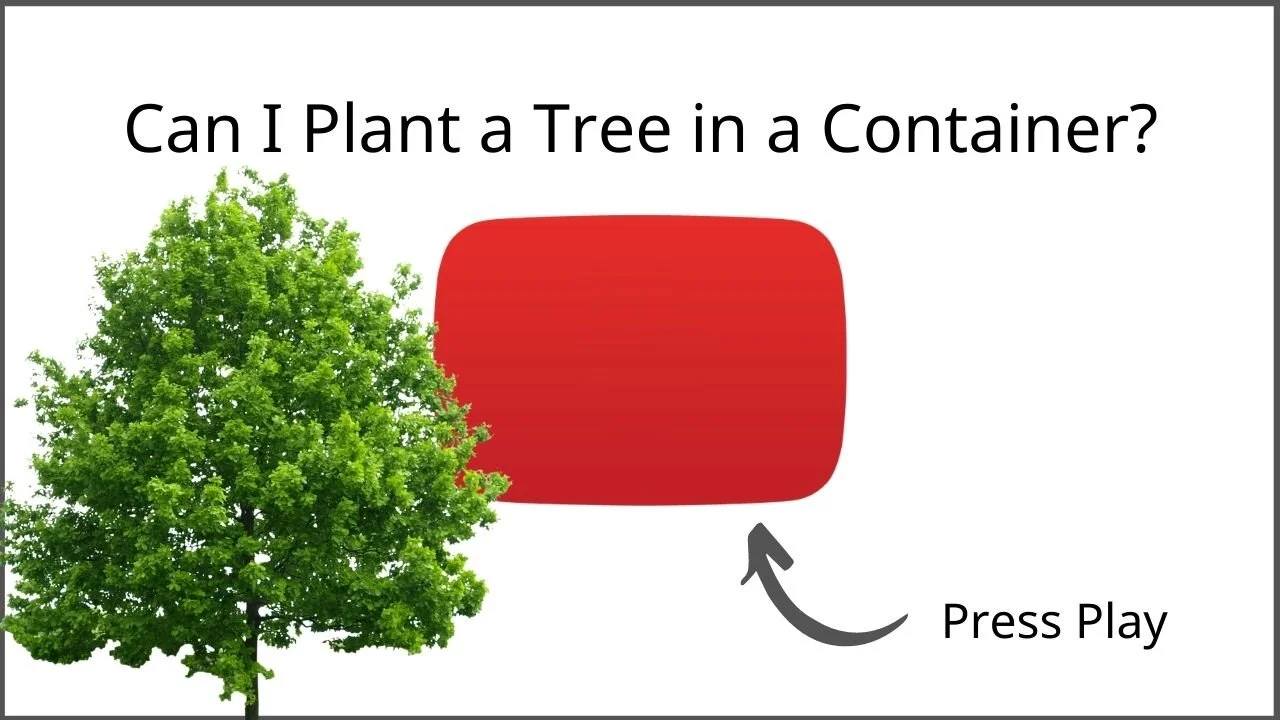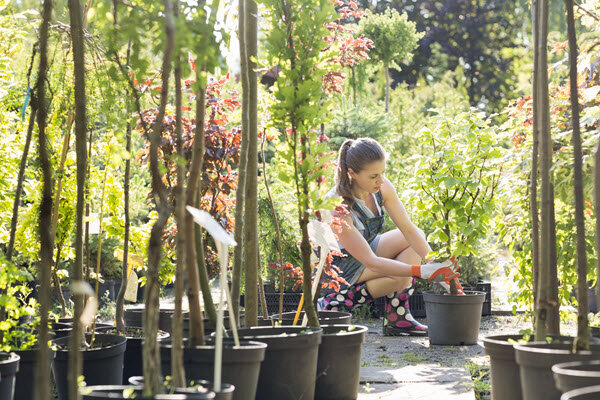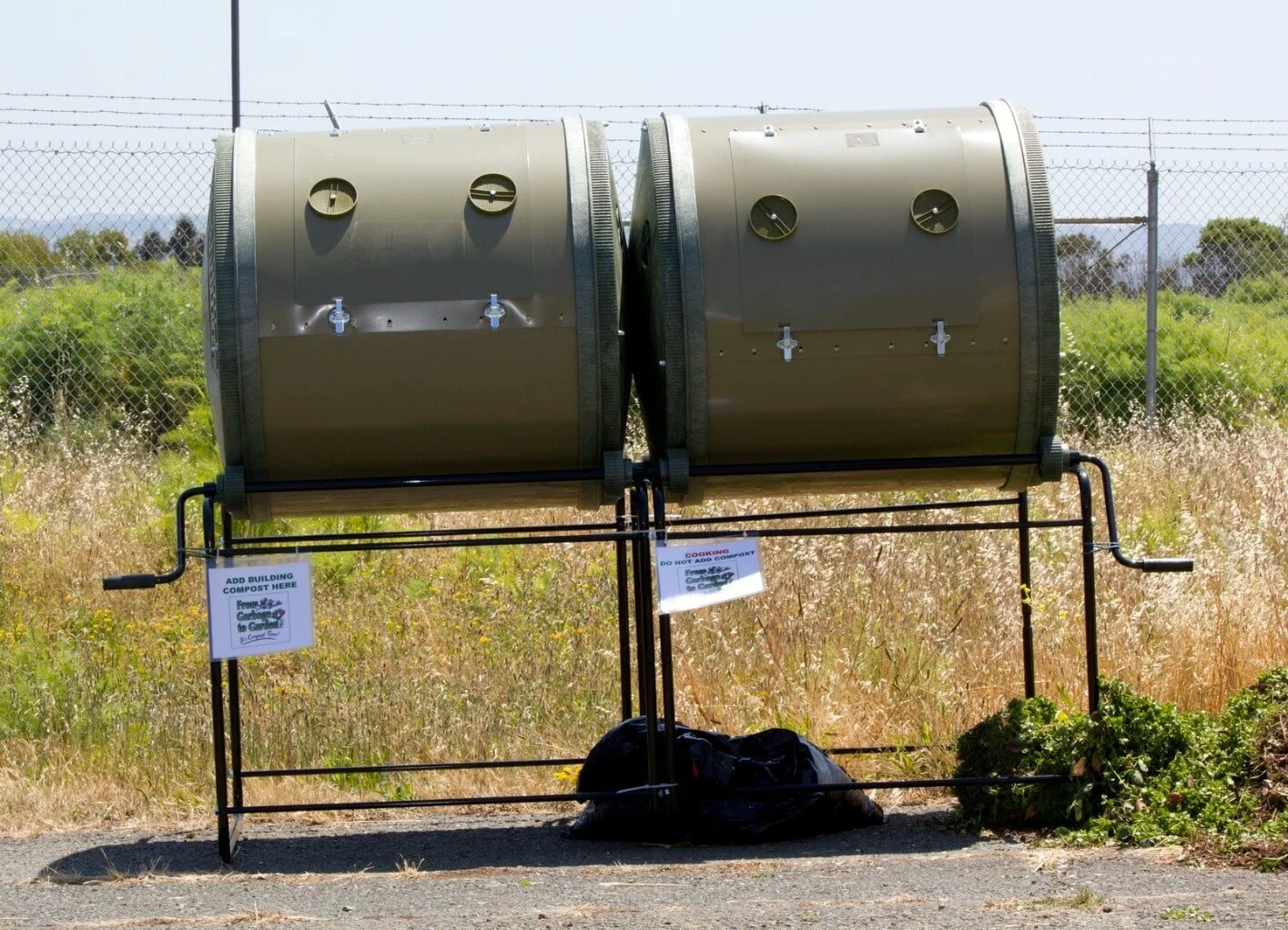Table of Contents
Yes, you can certainly plant a tree in a container if you pick the right tree, the right pot, and follow good gardening practices. If you have a big container, you can place it in a porch, a patio, a balcony, or even indoors.
Personally, I’m quite fond of the idea of being able to grow trees in pots and putting them in my apartment. Green always adds a vibrant vibe to a house, and who says you can’t have that if your home has no garden?
The following are top pointers on growing trees in containers:
Pick out high-temperature resistance trees
Choose trees that need limited space for root growth
Go for smaller trees
Choose containers with good drainage
Get insulated pots for colder areas
Ensure suitable soil and proper watering
Do mulching and root-pruning to extend tree life
Factors That Affect Growing Trees In Containers
I was excited to learn that a large number of trees can grow sustainably without being planted in the ground. If you pick the right type of tree, it can actually thrive for years in your container. However, there are a few points to consider when choosing a tree for such a purpose.
Temperature Tolerance
One difference between the soil in the ground and containers is temperature. Containers will quickly get cold, while the soil in the ground has more protection from cooler conditions.
Tree roots are more fragile than other parts of the tree, and containers alone cannot protect them from frost.
Temperatures below freezing prevent trees from absorbing water and kill roots. You’d be better off looking for more hardy trees that can withstand colder temperatures.
Yet, this may not be much of a problem for you if you only experience frost seasonally. When winter comes, there are simple solutions to protect your trees. You can move them to your shed or greenhouse. Otherwise, wrap them up with insulation if moving them is not an option.
Root Growth
In comparison to ground-planted trees, containers offer a substantially tighter space. Trees often grow their roots laterally and as far as they wish. This means trees with slower growth rates, or that need less space for root growth would be preferable.
Overall Size
Dwarf, miniature or trees with a smaller mature size work just fine for containers. These smaller trees will keep to a suitable size that will fit the container. But more importantly, they won’t need as much space for root growth as their larger compatriots.
What Kind of Trees Can I Grow in Containers?
For growing trees in containers, you’ll need to consider those that will suit the confined conditions. I was actually spoilt for choice when I learned about all the options I had.
Just take a look:
Dwarf citrus
Japanese maple
Conifers (miniature or dwarf variety)—junipers, pines, firs, and cypress
Fig
Olive
Palo verde
Bay
Southern magnolia
Witch hazel
Privet
Pomegranate
Choosing the Right Container for Your Tree
The container can either kill your tree or allow it to thrive. So choose wisely.
Container Size
Pick a container large enough to host the rootball of your tree comfortably. That doesn’t mean you should bag the largest container you can find. Instead, take it step by step, and increase the size as your plant grows.
Drainage
Make sure the container you pick has proper drainage capacity. Waterlogged soil is detrimental to plant growth and can significantly reduce your tree’s lifespan.
Weight
While it may not seem like an important factor, the weight could be a critical point to overlook. Structural integrity comes into question here as the weight of the container—together with the soil and tree weight—could be a significant load. Take note of this when setting trees on a balcony, patio, or another platform.
The question of mobility is also very important here. Heavier tree pots will be very difficult to move around.
Temperature Resistance
Personally, this may not be much trouble for me since I’m lucky enough to live in an area of moderate weather. But if you frequent a cooler climate, then it’s a different story.
An insulated or frost-resistant container is especially important if you have your eyes set on a not-so temperature-resistant tree.
Most Common Types of Tree Containers
To decide on the most suitable container, consider the tree you’ve picked as well as the weather conditions of your area.
Plastic
These lightweight containers will serve you well if you’re looking for something cost-effective and easy to move. If you tend to tinker with your decoration, plastic pots will be ideal. Being light, they also work just fine for balconies.
Clay
A heavier alternative to plastic if the overall load is not of concern. This added weight means they’re more stable against wind. Consider clay pots for larger trees that may be too much for plastic pots.
Terracotta
One of the most common plant containers. These pots offer a balance between weight and stability. However, they must be frost-resistant.
How to Maintain Your Potted Tree?
Container-planted tree maintenance is different than tending to trees rooted in the ground. It requires precise attention in a number of areas.
Choosing The Right Soil
Avoid topsoil and only use soil mixes intended for use in containers and pots. You can add sharp sand, peat moss, mulch, or other organic ingredients to your potting mixes. However, chicken grit has proven quite effective and is ideal for root aeration.
Watering
Potted trees need more water than ground trees. Twice a week is generally the minimum in high summer and should be fine for most of the year. Keep watering the plants till the pot starts to drain. Avoid watering altogether in cold weather when the temperature is below freezing.
Other Factors
Remember that trees in containers will need regular, non-excessive feeding cycles. Begin during the planting season with a slow-release fertilizer. Stop in the height of summertime so your tree can prepare for dormancy.
When your tree gets too large for the pot, you can go for repotting or root-pruning. The latter entails shortening roots that push up against the inner sides of the container. You can also take this opportunity to refresh your soil.
You can learn more about the detailed steps in this video.
Final Thoughts
If you choose the right type of tree, the right container, and follow the tips above, yes, you certainly can plant a tree in a container—and be successful about it.
I personally encourage you to.
More Helpful Gardening Tips

















